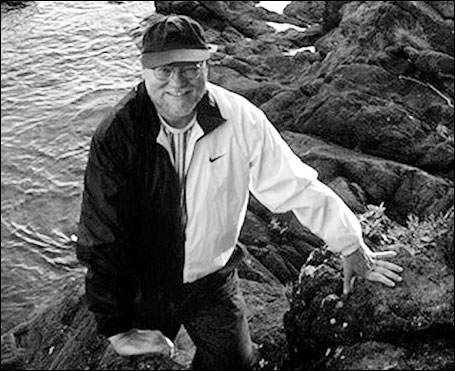While the best thing to do on the Great Plains is to get out and experience them in some physical way, perhaps the next best thing is to read books about the Great Plains, especially if the writer has some talent in describing the unique beauty that exists out there in “flyover country.”
 The author Paul Gruchow is just such a writer. His book The Necessity of Empty Places is a conglomeration of stories from various places around the West, beginning with the tallgrass prairies of western Minnesota, and continuing west to the Bighorn Mountains of Wyoming. Gruchow inspects landscapes with scientific accuracy, but also immerses himself in them with an eye for their beauty.
The author Paul Gruchow is just such a writer. His book The Necessity of Empty Places is a conglomeration of stories from various places around the West, beginning with the tallgrass prairies of western Minnesota, and continuing west to the Bighorn Mountains of Wyoming. Gruchow inspects landscapes with scientific accuracy, but also immerses himself in them with an eye for their beauty.
Photo by John Gregor.
I’m including here his description of crossing South Dakota because it reminds me so much of my own experiences there. Enjoy!
Somewhere beyond Mitchell, South Dakota, the croplands will take on a ragged and underdeveloped look, and you will notice fewer fields and more pastures. By then you will have crossed an invisible boundary and entered the rain shadow of the mountains, where fewer than twenty inches of precipitation fall in a year, twenty inches being, roughly, the critical number for successful row cropping without irrigation. You will have passed by then from prairie gardens into a wilder and less domesticated place.
Without warning you will suddenly, at Chamberlain, South Dakota, encounter the Missouri River, fat and lazy behind its succession of dams and tucked into a deep and narrow valley beneath dramatic bluffs as naked in their thin raiment of short grasses as newborn bear cubs. Beyond the Missouri lies a new land. In the distance the first buttes appear. Everything is more rugged and endlessly grassy, and the grasses are more brown than green. The few farmyards you pass sit exposed on the hillsides to wind and weather; they are treeless, flowerless; their buildings unpainted; their piles of junk exposed to view. The fenceposts are topped not with field stones, but with old cowboy boots. There is, nevertheless, a spareness, a wildness, about these unbroken and unadorned hills, an extreme simplicity of line and shape, that gives them a neat and freshly washed look, a pristine and economical beauty.

